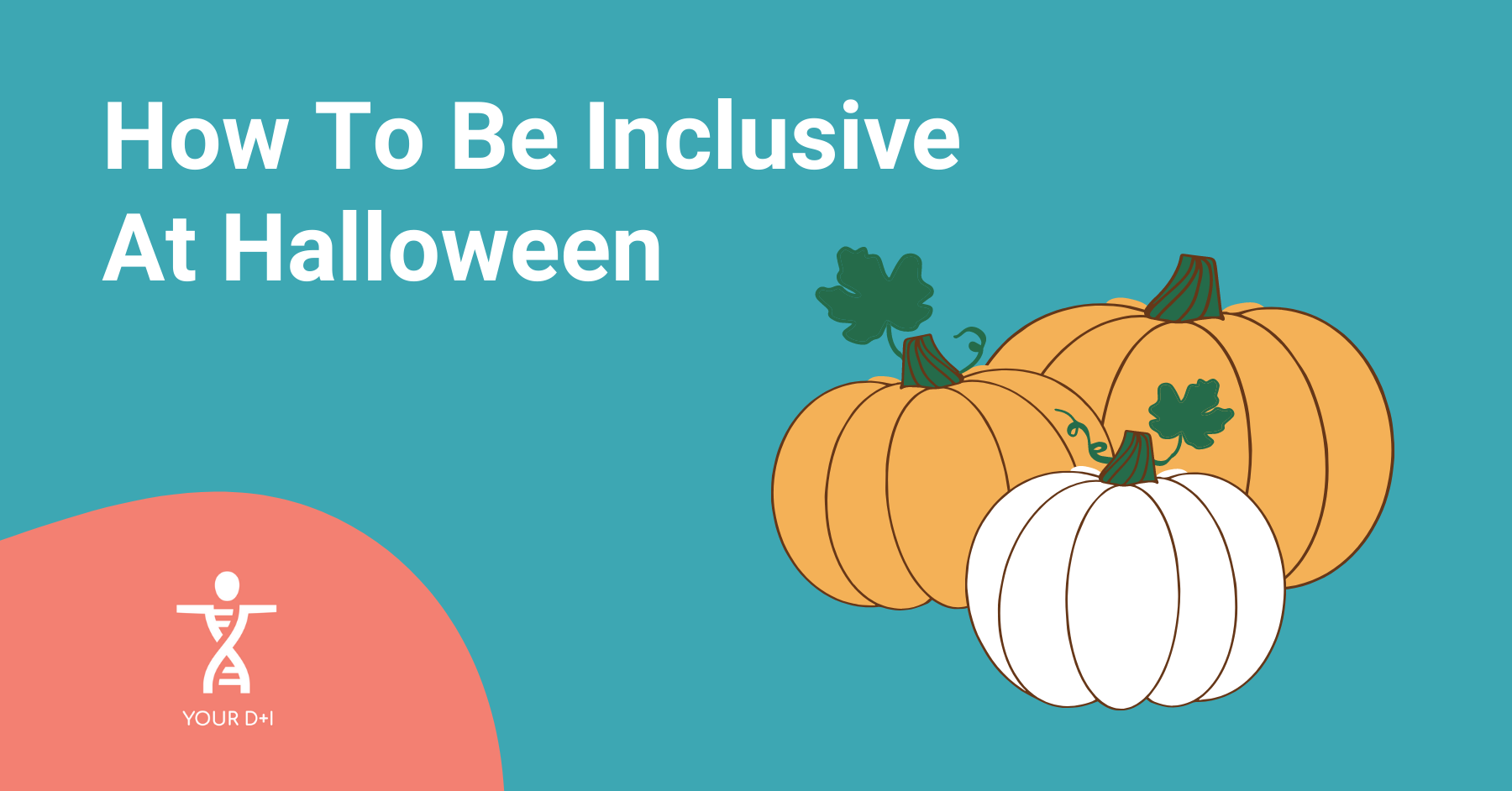How To Be Inclusive At Halloween
Halloween is just around the corner, and this can bring with it some issues for Diversity + Inclusion. Plenty of the tropes found in horror movies can be harmful, and these can find their way into Halloween costumes, decorations and imagery. This isn’t to say you should avoid Halloween festivities altogether, of course. It is important, however, to ensure your entire team feels included in any seasonal activities. That’s why today’s blog is all about having an inclusive Halloween.
Creep away from cultural appropriation
The conversation around which costumes are appropriate comes up around Halloween every year. If there are any fancy dress work events or office parties, make sure everybody knows which costumes aren’t appropriate and why. One of the biggest issues around this time is cultural appropriation. This is the act of taking elements from a culture that is not your own, especially when done in a derogatory or mocking way. On the first costume website I found on Google, there were Mexican costumes, Hawaiian costumes, Rabbi costumes and Native American costumes, among many other egregious examples of cultural stereotyping.
You should also be aware of the origins of some tropes that are rooted in racism and cultural stereotypes. The clearest example I found of this was the ‘fortune teller’ costume, based on stereotypes in fiction of Romani people possessing magical powers. There are also costumes based on Aladdin, Sinbad the Sailor and other characters heavily inspired by Middle-Eastern cultures.
Flee from other harmful tropes
Avoiding inappropriate costumes doesn’t end with not dressing up in a poncho and sombrero. In fact, there are Halloween costumes that can cause harm to many groups, like those with mental health issues.
You don’t have to look far in horror fiction to find asylums being used as settings, casting their patients as villains. This trope is based on the genuine horror of antiquated mental ‘healthcare’. Perhaps the most prominent real-life example of this was Bethlem Royal Hospital, also known as Bedlam. Similarly, straitjackets are not an uncommon sight in the costume sections of shops. Nor are costumes of evil nurses and the like, which also come from the same trope.
Likewise, the trope of a villain being trans or gender non-conforming in some way (think Rocky Horror) can also be very harmful. If you’re not trans, non-binary or gender non-conforming yourself, you should consider avoiding costumes that fit this trope.
Be scareful with imagery and decorations
Not every employee may feel comfortable joining in with Halloween celebrations for various reasons, including personal or religious beliefs. It is important in these situations not to enforce festivities on people. Ensure they still feel like a respected team member or valued client if they choose not to participate.
Even for those who do want to participate, Halloween can cause stress if those around them are not thoughtful. Halloween is centered around spooky iconography so it is important to be mindful of those with phobias. Fears of spiders, clowns and rats are common, and these things are often seen in Halloween decorations and campaigns. It is important to bear this in mind when decorating the office or even creating a Halloween marketing campaign. Using clearly cartoonish depictions of things like spiders can prevent a visceral response from someone with arachnophobia, for example.
Halloween can also be a time of sensory overload for people with sensory processing issues. Parties can include loud noises from animatronic decorations, tactile sensations from hanging decorations that hang too low and visual stimuli from foil or light-up decorations. This can cause distress or distraction for people who are neurodivergent or experience sensory overload in general.
Have a great Halloween!
Halloween is a great time to bring fun into the office, and it can even promote inclusion by bringing everyone together. However, you should remain mindful of your commitment to Diversity + Inclusion year-round. By avoiding the harmful tropes and potential distress it can cause, you can have a fun and inclusive Halloween.


